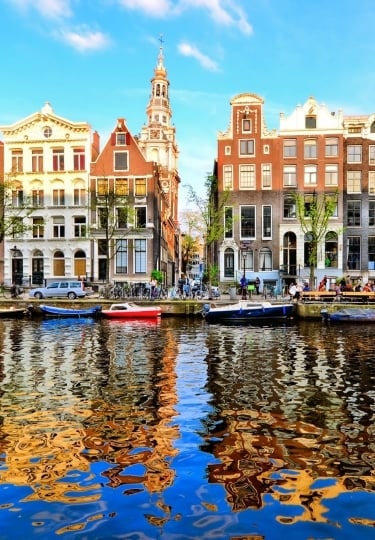Amsterdam’s Centrum has a carnivalesque atmosphere. As soon as you emerge from the grand 19th-century frontage of Centraal Station, you’re swept up into the good vibes of this so-called “Venice of the North”.
From the street performers of Dam Square to the serenity of the Begijnhof Courtyard or the Hortus Botanicus, downtown Amsterdam has it all. There’s big-city energy coursing through this compact canal-cooled kernel of medieval lanes, ringing with bicycle bells and lined with museums, boutiques, and waffle houses.
Here are 11 of the best things to do in Centrum.
Get Your Bearings in Dam Square
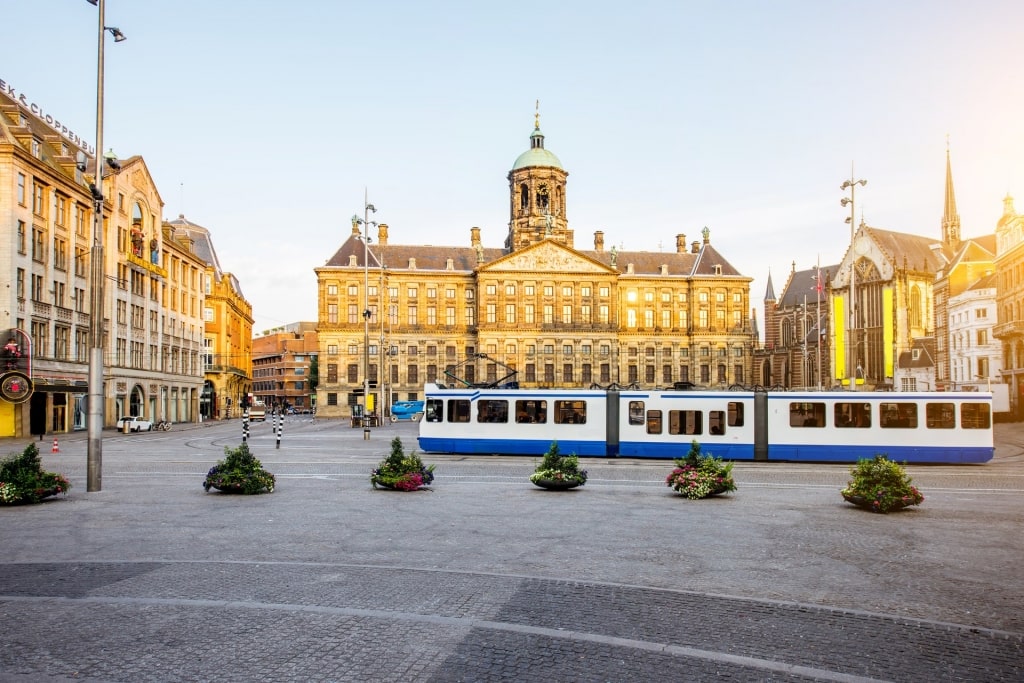
Dam Square
While Dam Square is named for the dam built in the Amstel River to prevent the city from flooding, it’s also an apt name for how travelers tend to eddy and gather in this central space before filtering out into the downtown streets.
Five minutes’ walk from the main train station, the square is lined with symbols of establishment power. There’s the 17th-century Royal Palace (Koninklijk Palace), the former home of the Dutch Royal family and used today for hosting for visiting heads of state who require its pomp and circumstance.
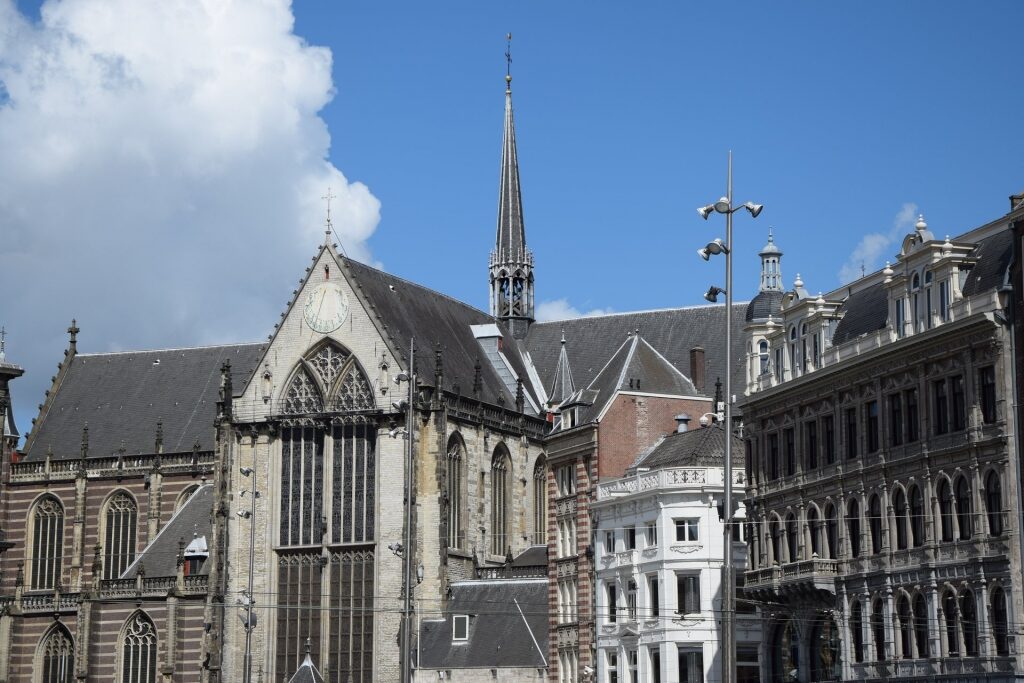
Nieuwe Kerk
Beside the palace, adding ecclesiastical heft, is the Nieuwe Kerk (built around 1400, it’s only the “new” church in relation to the 13th-century Oude Kerk) where the Dutch royalty is inaugurated. However, in the Sixties, the counterculture revolution arrived in the form of rough-sleeping hippies. They considered The National Monument, also in Dam Square, a symbol of liberty.
Today the square sees summer carnivals, food stalls, and omnipresent street performers. If you require some retail therapy, duck into the flagship Bijenkorf department store.
Cruise the Canals
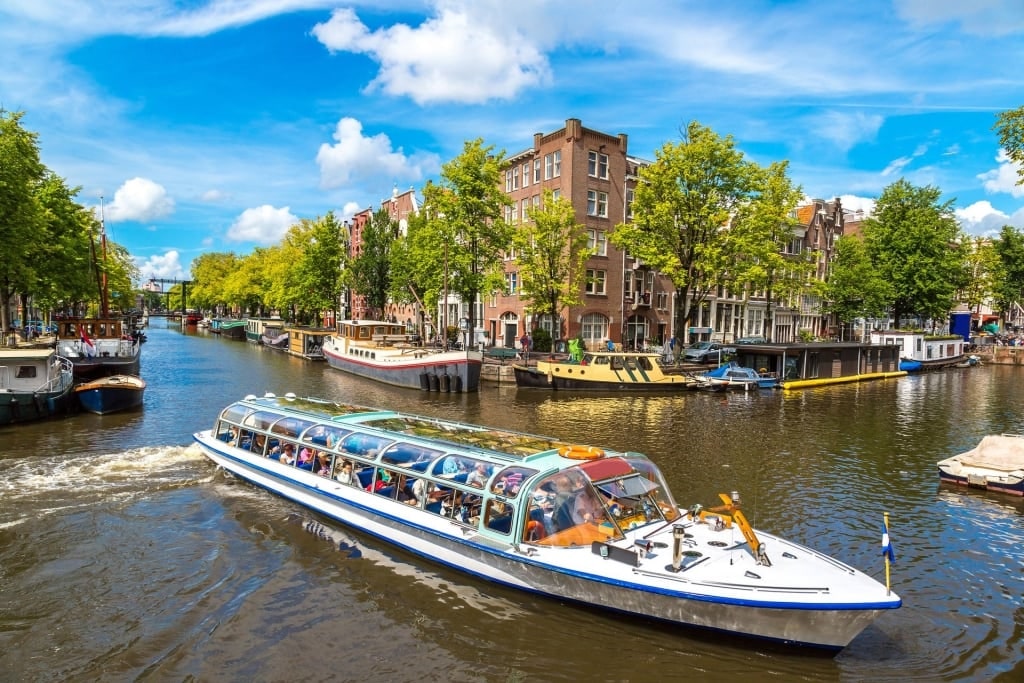
Canal Ring
Seen from above, the canals in Amsterdam’s center ripple out into the city like a frozen shockwave. A remarkable feat of engineering from the 17th century, the tree-shaded waterways have come to characterize Amsterdam as much as bicycles and tulips.
At the time, the intricate system offered traders unparalleled ease of goods delivery to urban docksides. Such success brought further canals, eventually building up to the modern total of 62 miles of waterways vaulted by 1,500 bridges.
The inner network of four canals, however, remains the section most worth your focus if you’re considering a canal tour. This “Canal Ring”, a listed UNESCO World Heritage Site, passes by historic sites and gabled street scenes making for a leisurely tour beyond the busy sidewalks.
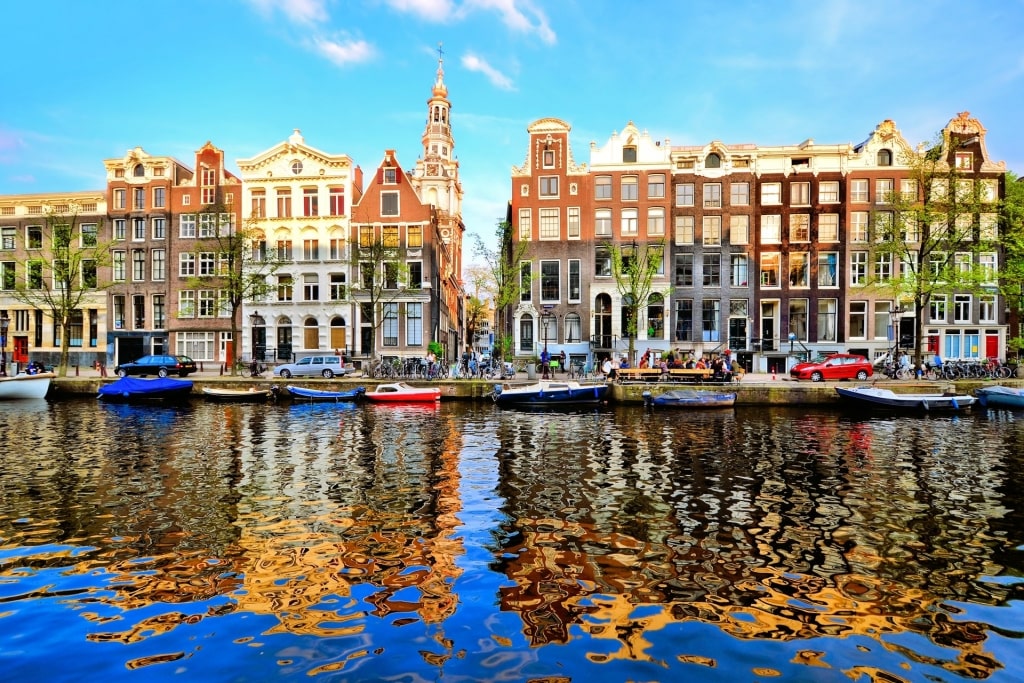
Singel Canal
You’ll cruise the original Singel canal, previously a moat protecting the infant city before the building of the canals saw Amsterdam expand to four times its original size over only 50 years. Spot antique mansions along the Herengracht canal’s Golden Bend and, along the Prinsengracht canal, the Anne Frank House.
Visit an Old Master’s Home
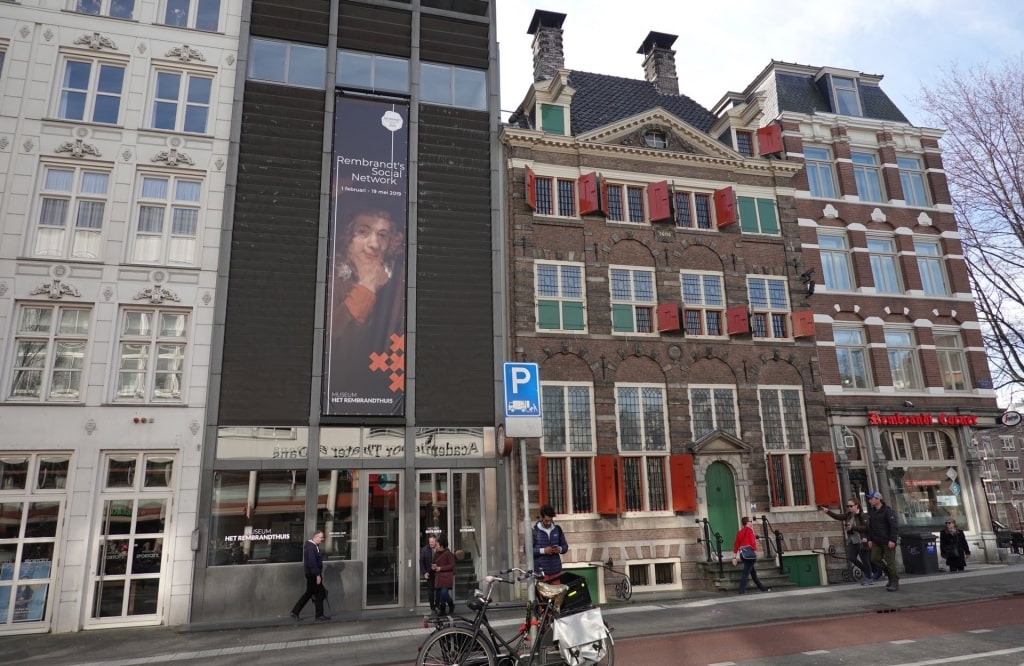
Rembrandt House Museum Photo by Richard Mortel on Flickr, licensed under CC BY 2.0
A quiet jewel in Amsterdam’s center, Rembrandt’s house is a stout brick building that the painter purchased, newly built, in 1639.
This popular art museum in Amsterdam is on Jodenbreestraat, in what was the fashionable Jewish Quarter. Rembrant’s overwhelming mortgage on the property of 13,000 guilder, well beyond his means, would contribute heavily to his bankruptcy and subsequent exit from his home 17 years later. Helpfully, it’s been possible to restore his home and its contents from the bankruptcy documents.
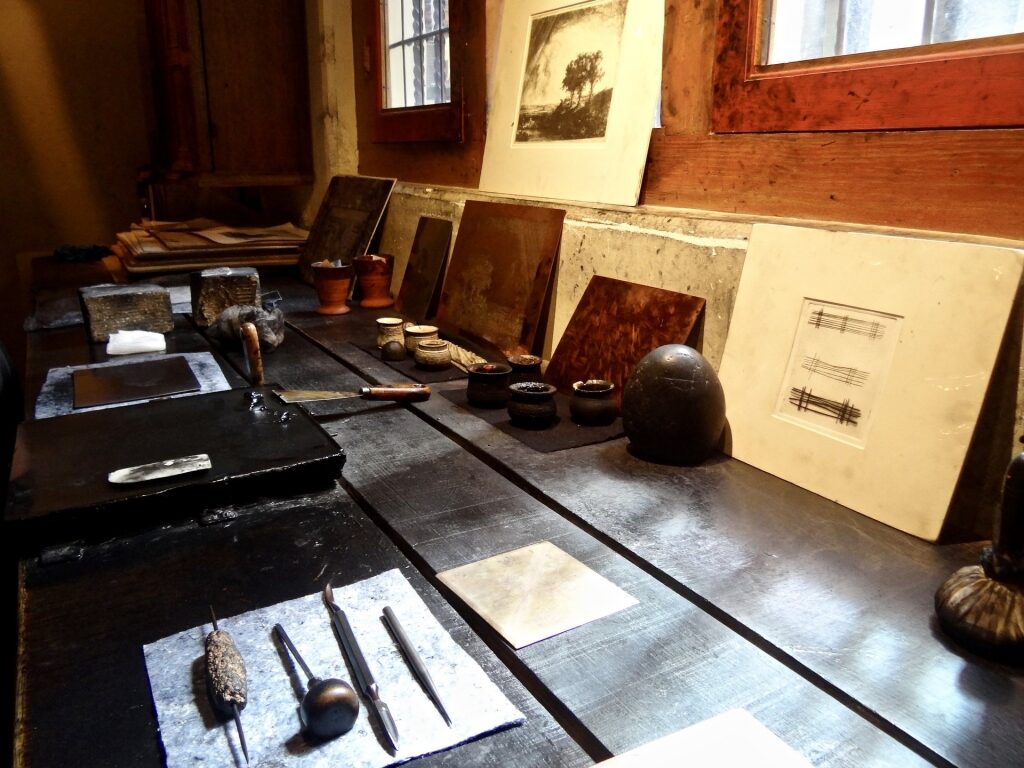
Rembrandt House Museum
As such, entering the house through its bright green door, it’s as if he never left. The interior vividly replicates how it would have looked when Rembrandt and his wife Saskia Van Uylenburgh lived within. You can enter his light-flooded workshop, his canvas ready for his latest portrait commission, with information on the techniques he applied.
Attached to the house is a contrastingly modern museum offering further insight into his life during the Dutch Golden Age. Printing demonstrations also take place on site, and you can take home a print of one of Rembrandt’s etchings.
Shop the Nine Streets
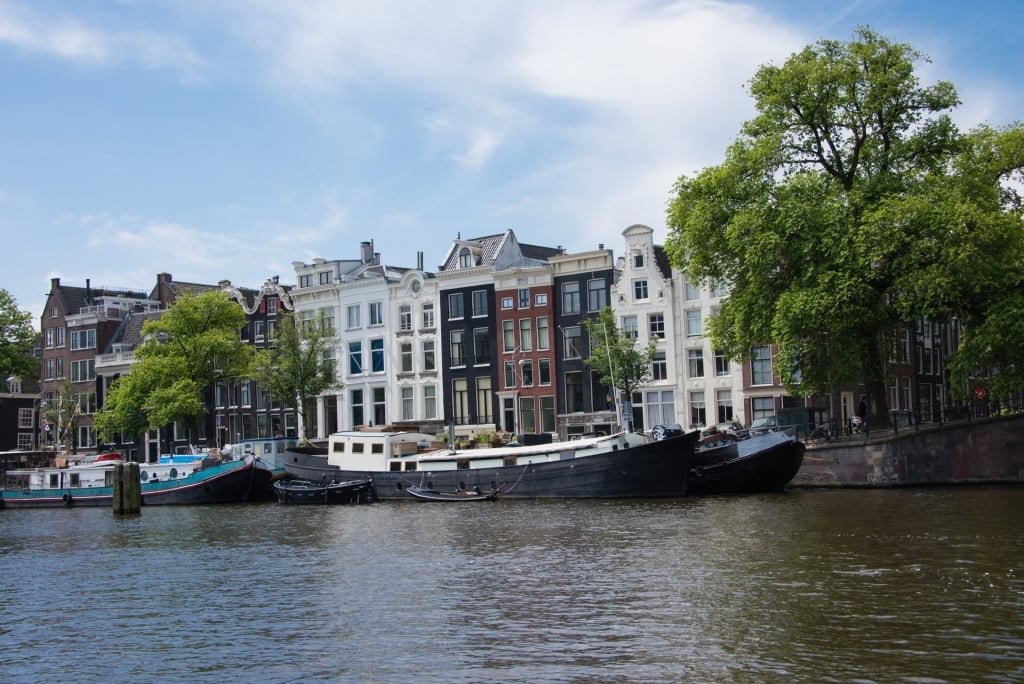
Nine Streets
“De Negen Straatjes” or “the Nine Streets” is a handsome urban weave of colorful indie shops, art spots, and trendy places offering everything from coffee to lobster on French toast at Libertine Comptoir de Cuisine.
You’ll find this enticing commercial niche behind the Royal Palace, sandwiched between the Prinsengracht and Singel canals. But it’s also just a wonderfully emotive area of the old city, the former leather tanning district.
Today it’s a great place to drop out of the mainstream tourist track into a pocket of authentic Amsterdam, whether to browse the vintage clothing racks of Episode or admire the gables of the 17th-century townhouses.
Explore Trendy Jordaan
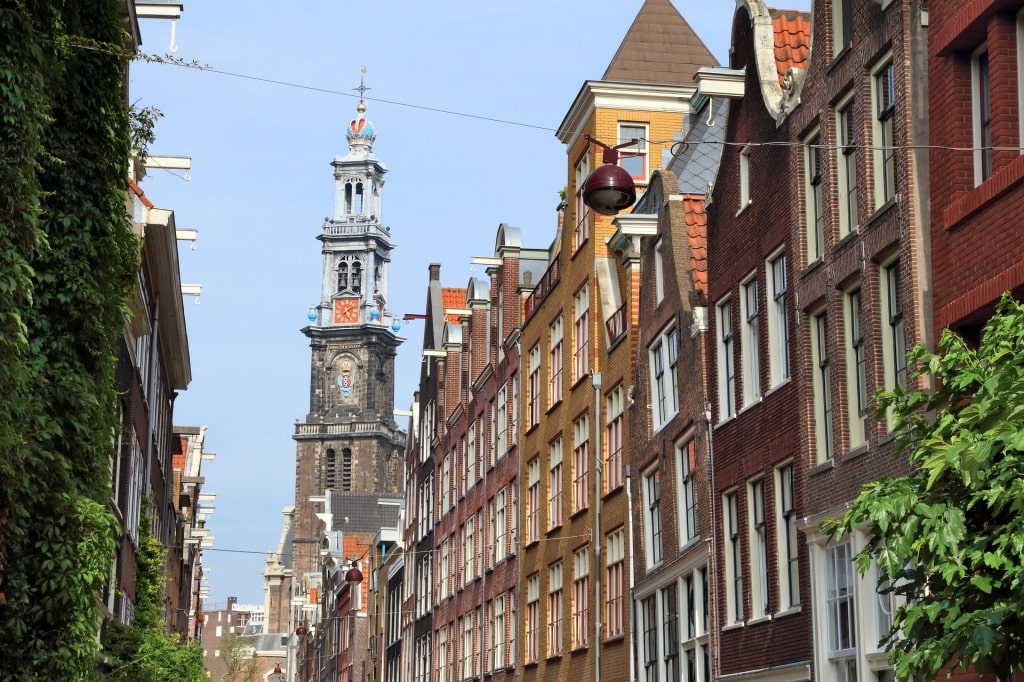
Jordaan
A 17th-century district constructed to house the city’s working class, Jordaan, found on the west side of the Canal District, has become one of the city’s hippest neighborhoods.
Despite its location in Amsterdam’s center, Jordaan feels like a preserve of Dutchness impervious to the impact of mass tourism. The city’s immigrant melting pot, Jordaan once attracted those on lower incomes to its affordable rents, including Rembrant, that genius artist fallen on hard times.
This Amsterdam neighborhood was regenerated during the 1970s. Now art galleries and street musicians apply an artistic gloss. For all of that, reminders of the area’s hard-worn past remain, such as the tablets above doorways indicating the profession of those who used to work there, or the small courtyards inserted amid the streets filled with shoppers and lunching locals.

Dutch pancakes
If you’re hungry, join that latter crowd on the patio on Westerstraat for people-watching and Dutch pancakes. If you just want dessert, Winkel43 on Noordemarkt is renowned for its apple pie. On Saturdays, you’ll find the locals nibbling cubes of gouda at the produce stalls of the Lindengracht Market. Or try Noordermarkt for its organic stalls and colorful displays of fruits and flowers.
Beyond retail, Jordaan is also home to some niche museums. Fluorescent light fans will be lit up by Electric Ladyland. Or check out Woonbootmuseum, a 1914 cargo ship that allows you to explore what life is like living aboard an Amsterdam canal boat, as many do.
See the Floating Flower Market
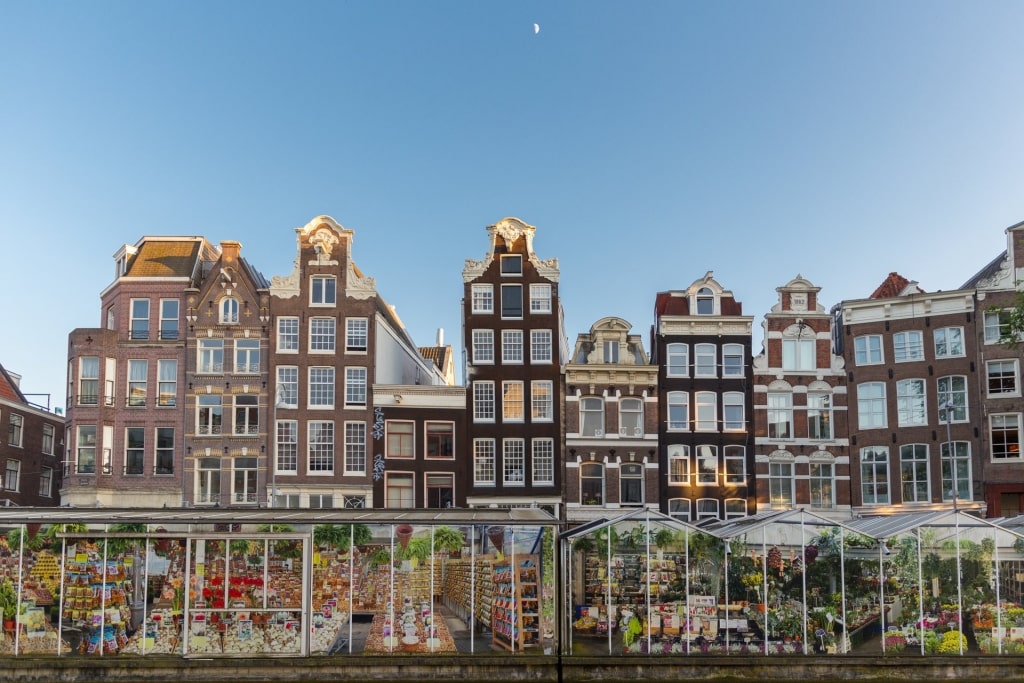
Flower Market
This waterborne institution, selling a wide variety of blooms, bulbs, and seed packets, has been moored along the ancient Singel canal since the mid-19th century. Its original purpose was as a stop-off for out-of-town flower merchants who were shipping in their tulips to the heart of this city of fanatical florists.
Today, the market is a securely moored chain of sweet-smelling barges crammed with gorgeous geraniums, spring bulb gift sets, and, of course, tulips. Buy a packet of seeds and plant a little corner of Amsterdam color upon your return home.
Breathe in the History of the Old Church
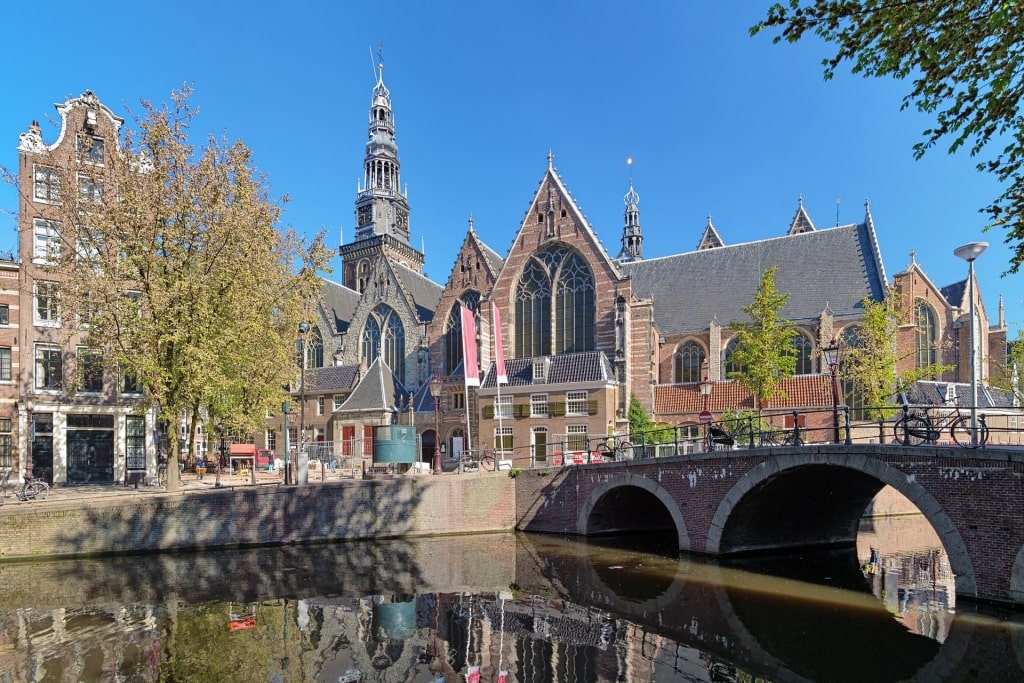
Oude Kerk
The oldest building in the city, the Oude Kerk (Old Church) rises like some kind of ecclesiastical factory from behind the tall Amsterdam townhouses. Its existence today is a testament to the love shown to it by generations of Amsterdammers, the building having seen its fair share of wrack and ruin over the centuries.
Found ten minutes’ walk from Centraal Station, this vast space, with its high wooden ceilings and airy interior, could double as a market hall. However, its floor is entirely composed of gravestones, the result of the Oude Kerk originally being built on a cemetery. Among the buried is the wife of Rembrandt, Saskia van Uylenburgh.
Today, the church is not only a stop for history and architecture buffs, but also for contemporary art lovers. Its light-flooded interior hosts regular site-specific exhibits. To complete the picture, climb halfway up the church’s 220-foot-high tower for expansive views over Amsterdam’s center.
Navigate the National Maritime Museum
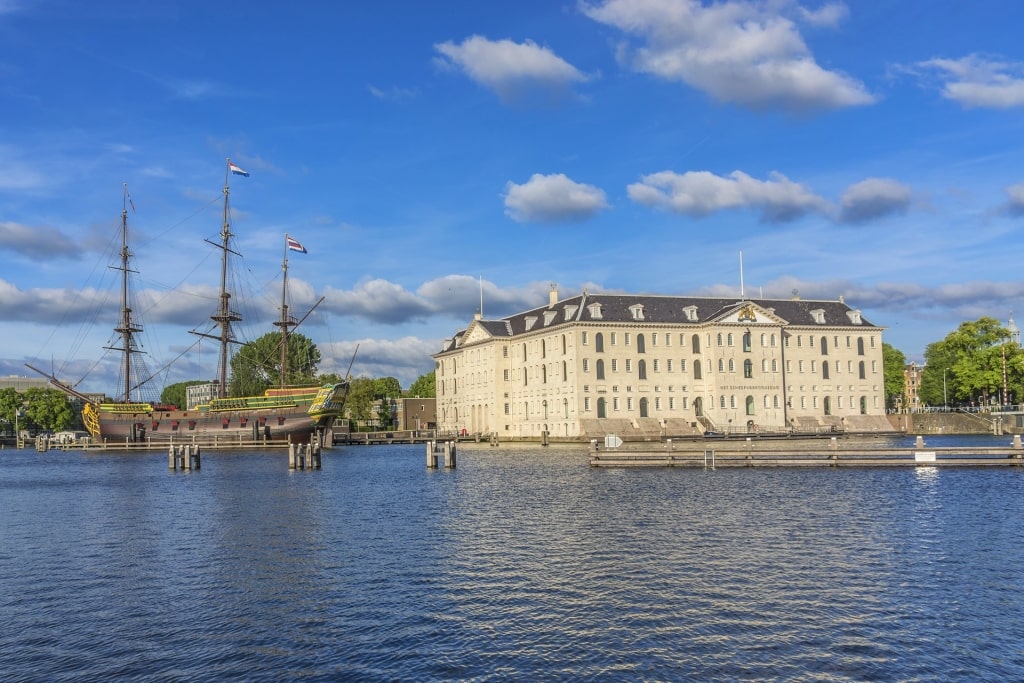
National Maritime Museum
The National Maritime Museum floats dramatically on the water of the city’s old harbor. It’s sited in a gorgeously grand UNESCO-listed building. Within its square footprint is a glass-covered courtyard that, with its juxtaposition of old and new, recalls the pyramid at the Louvre.
In use by the Dutch navy until 1973, this building is now one of the city’s finest museums. Through multimedia exhibits, model ships, and navigation maps, you’ll absorb the 500-year history of how the Netherlands grew into a dominant sea power.
One of the highlights is the Republic at Sea section that recounts, through over 50 masterpieces, the Dutch Golden Age and how it stood on the foundations of maritime trade. Beneath the dark-beamed ceilings, you can almost hear the cannon shot while admiring the oil paintings of galleons pitching on tempestuous waves.
Relax in the Begijnhof Courtyard
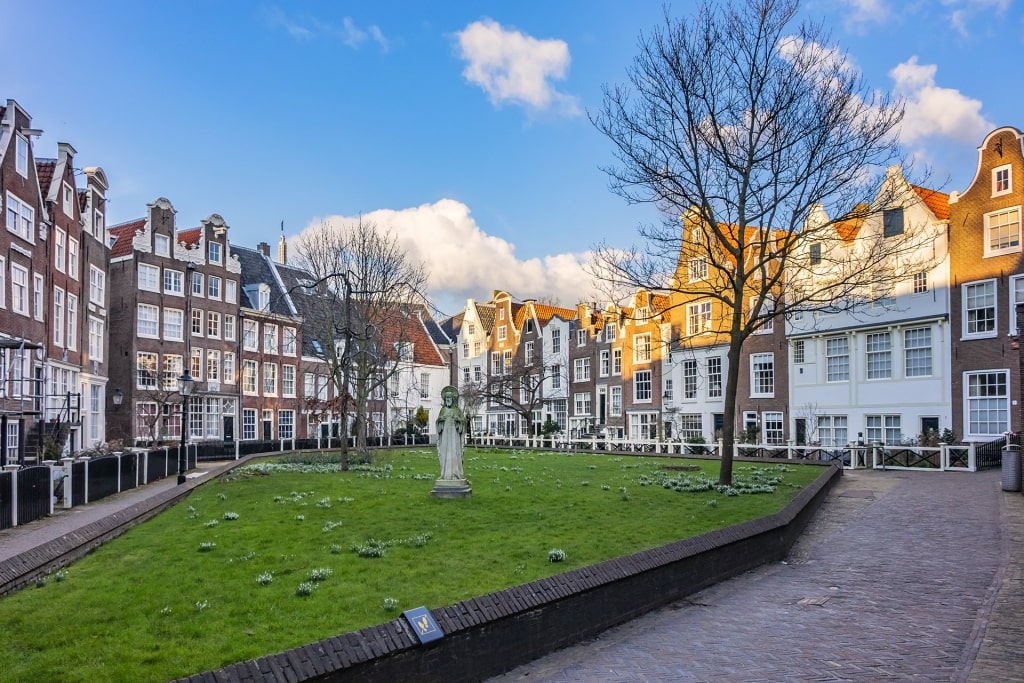
Begijnhof Courtyard
Step out of the whirl of Amsterdam’s center with a visit to the Begijnhof Courtyard, a secluded green overlooked by historic gabled townhouses. You’ll find the entrance to Begijnhof Courtyard amid the bookstores and art stalls of Spui Square.
The oldest and best remaining example of the city’s enclosed medieval yards, the Begijnhof Courtyard was originally a 14th-century retreat for the semi-monastic order of the Catholic Beguine sisterhood.
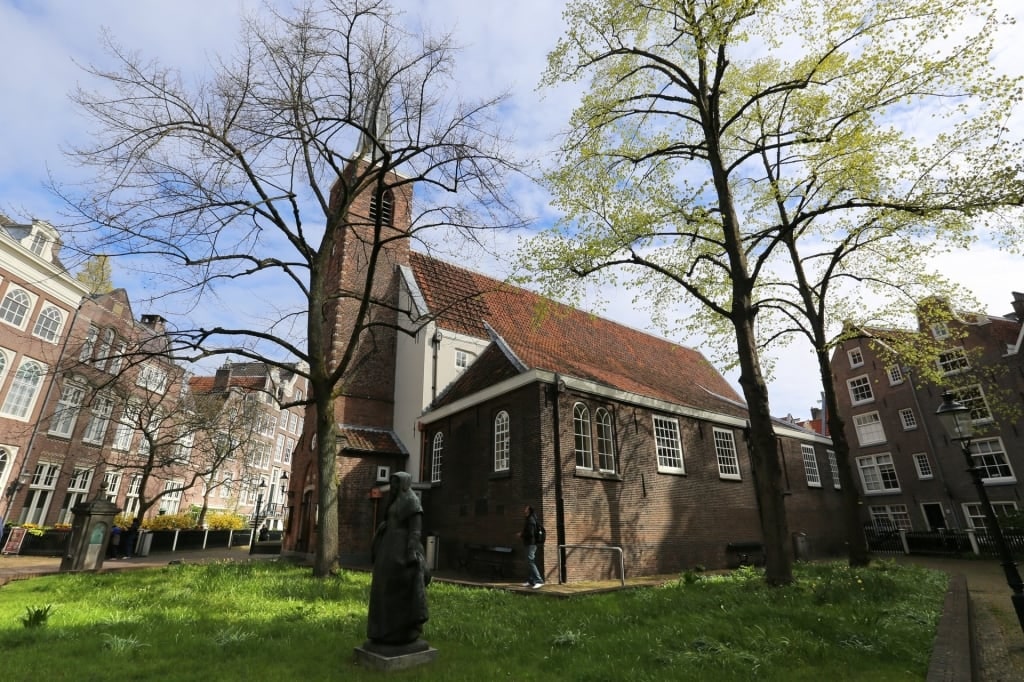
Begijnhof Courtyard
Besides the surreal sense of dropping out of clattering reality into a serene other dimension, there are also two churches to investigate within the courtyard’s looping path of herringbone brick.
One of them is deliberately intended not to look outwardly religious, a relic from a more oppressive time for Dutch Catholics in the 17th century. Another historical monument found here is Amsterdam’s oldest preserved wooden house.
Stroll Through the Hortus Botanicus
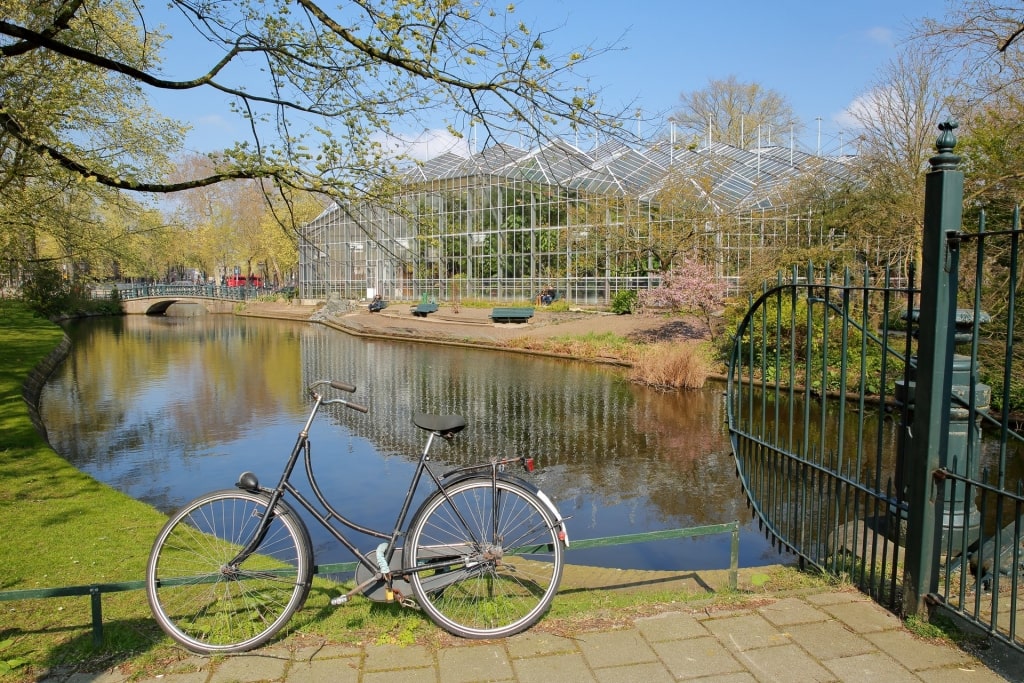
Hortus Botanicus
Founded in 1638, the Hortus Botanicus is one of the world’s oldest botanical gardens. Originally dubbed the “Hortus Medicus” and planted with medicinal herbs and plants for the exclusive use of medieval quacks, today it’s open to all. Amid its buildings and gardens you’ll see transparent butterflies, Persian ironwoods and, if you’re visiting in April, a tulip festival.
With a botanical garden of this age, there are some extraordinary stories attached to its rooted residents. Perhaps the most famous concerns the humble coffee plant in the collection that has since become the parent to the entire Central and South America coffee crop.
Over the years, the Hortus Botanicus has been added to and upgraded, creating an attractive architectural blend. The pavilion was built in the latter half of the 17th century, while the orangery was installed in 1875.
Walking within the steamed-up windows of the 20th century tropical greenhouses is a favorite outing for Amsterdammers in the know on cold winter days.
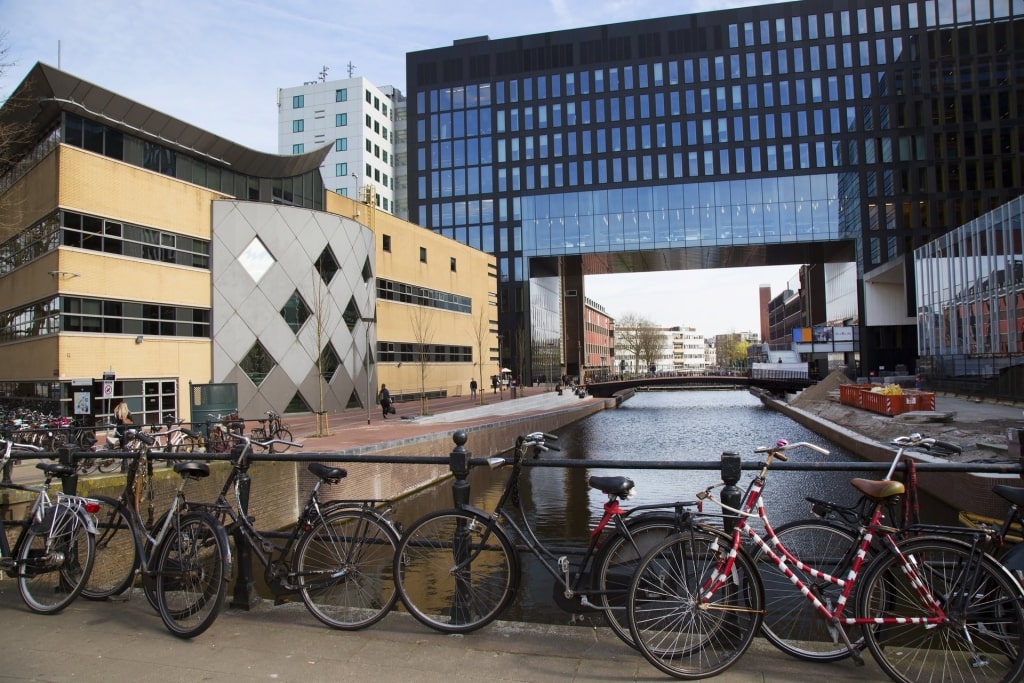
Amsterdam University
The Hugo de Vries Laboratory, found on the campus of Amsterdam University, is named in honor of the former director who brought the botanical gardens international acclaim during his Belle Époque tenure.
You’ll find the peaceful garden in the Plantage neighborhood on the eastern side of Amsterdam’s center, sandwiched between the Nieuwe Herengracht and Nieuwe Keizersgracht canals.
Go to the Anne Frank House
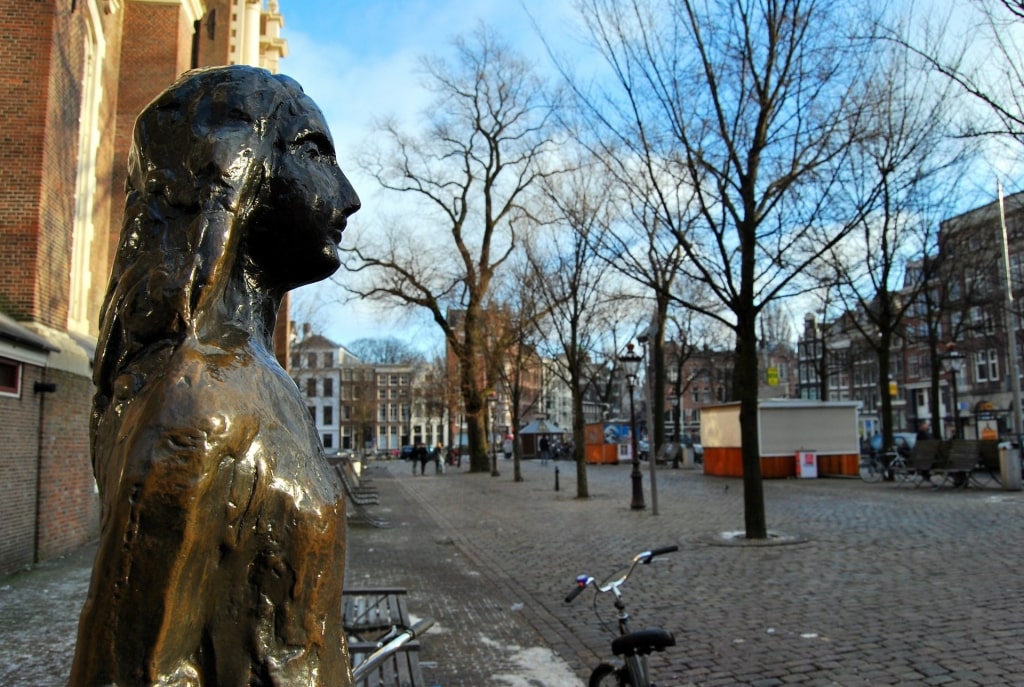
Anne Frank House
One of the most poignant landmarks Amsterdam is known for is the world-famous Anne Frank House. Found reflected in the calm waters of the Prinsengracht canal, this museum and historic building offers visitors the opportunity to acquaint themselves with a Jewish teenager enduring the city’s horrific wartime reality while concealed behind a bookcase.
Beside the canal house where Anne and her family hid from the Nazis for two and a half years, you’ll find a museum concerning the lives of the Franks. Its displays are effective at swiftly bringing you up to speed on their story, famously chronicled by the young Anne in her diary.
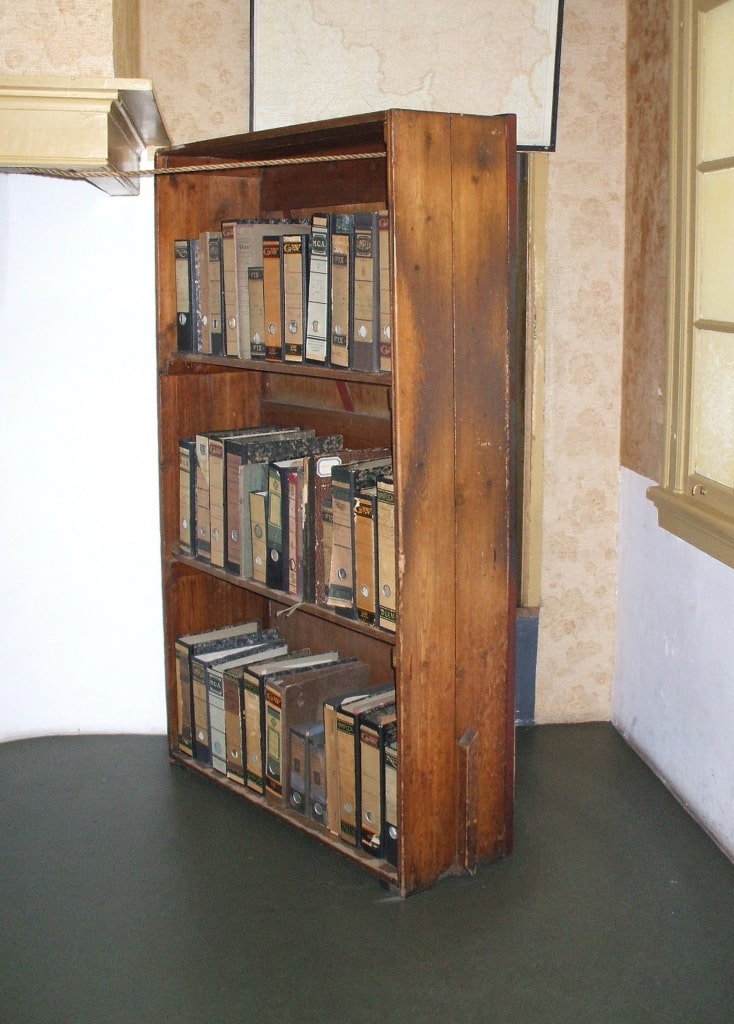
Anne Frank House Photo by Bungle on Wikimedia Commons, licensed under CC BY-SA 3.0
After this formal introduction, you’ll climb the stairs to where the family lived, imagining those concealed listening out for footfalls on the creaking stairs. Behind the bookcase, you’ll enter the reconstruction of the rooms, complete with period furniture.
In Anne’s room, affixed to the wall, are the faces of movie stars cut out by the starstruck teen. The whole story of the family is profoundly moving.
The Anne Frank House, being so high profile as well as conveniently near Amsterdam’s bustling city center, is usually busy so you’d do well to book online in advance of your visit.
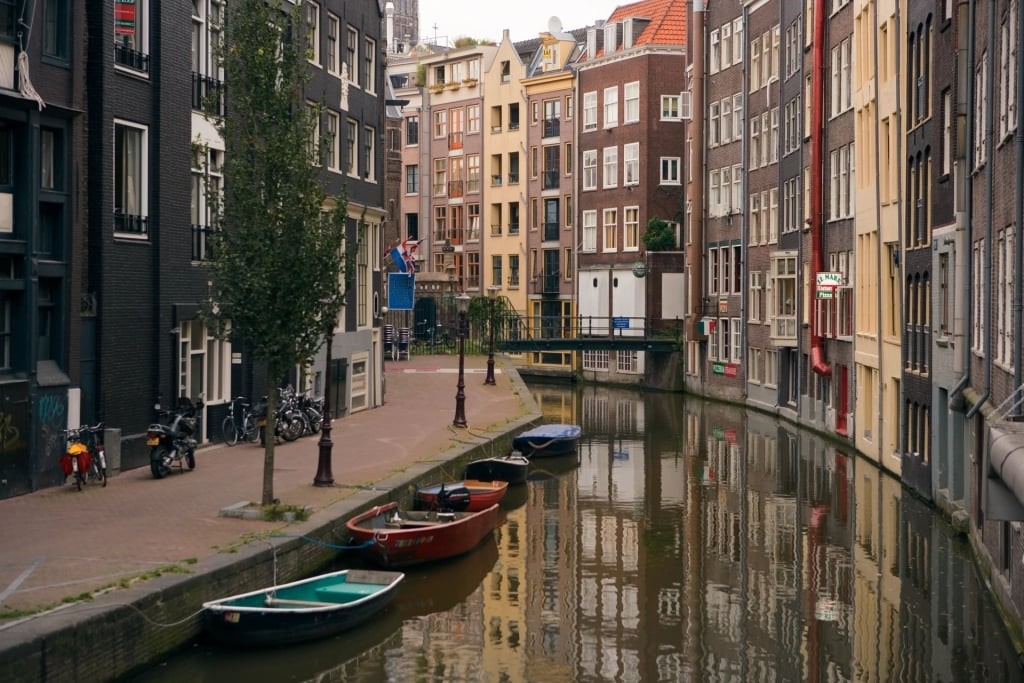
Amsterdam
Experience the vivacious city, with its handsome canals and artistic heritage, before embarking on a cruise from Amsterdam to some of Europe’s most coveted destinations. Browse our cruise itineraries online and book a cruise vacation today.
